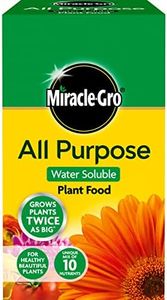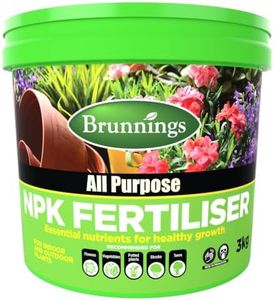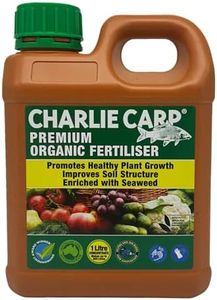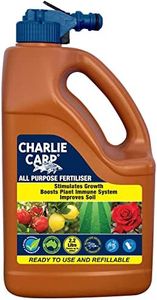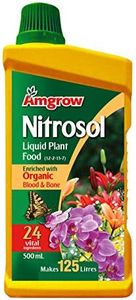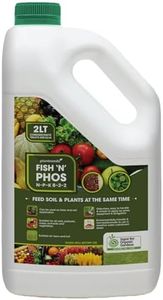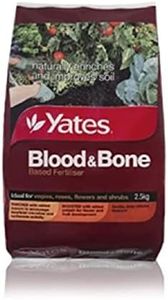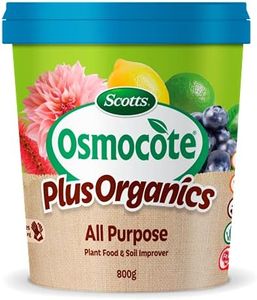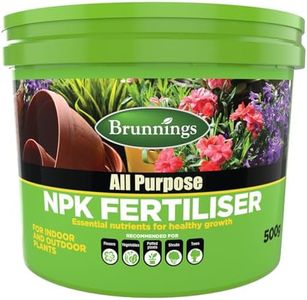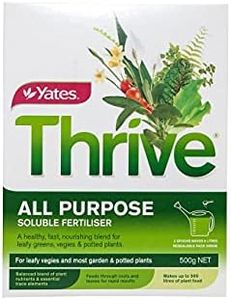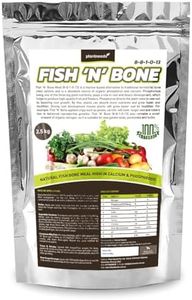We Use CookiesWe use cookies to enhance the security, performance,
functionality and for analytical and promotional activities. By continuing to browse this site you
are agreeing to our privacy policy
10 Best Sweet Corn Fertilizer
From leading brands and best sellers available on the web.Buying Guide for the Best Sweet Corn Fertilizer
Choosing the right fertilizer for sweet corn is all about understanding the nutritional needs of your crop and matching them with the nutrients provided by different fertilizers. Sweet corn grows quickly and requires a good balance of essential nutrients to develop strong stalks, lush leaves, and tasty ears. By looking at the key specs below, you’ll be able to select a fertilizer that promotes healthy growth and maximizes your harvest.N-P-K RatioThe N-P-K ratio stands for Nitrogen (N), Phosphorus (P), and Potassium (K) and appears as three numbers on a fertilizer bag (like 10-10-10). This ratio tells you the percentage of each nutrient in the mix. Nitrogen helps the stalks and leaves grow, phosphorus supports root and ear development, and potassium strengthens the plant overall. Fertilizers come in high, balanced, and low N-P-K ratios. Higher nitrogen content (like 20-10-10) supports early leafy growth, while balanced mixes (such as 10-10-10) can be good for general health, and lower numbers are best for mature plants. If your soil is already fertile, a balanced or low ratio may be enough. Test your soil to find out what nutrients it needs most and choose a fertilizer that matches those needs and the growth stage of your sweet corn.
Type of Fertilizer (Granular, Liquid, Slow-release)Fertilizers come in different forms: granular (small dry pellets), liquid (mixed with water), and slow-release (coated for gradual feeding). Granular fertilizers are easy to spread and good for even feeding, while liquid fertilizers act quickly and are absorbed through the roots or leaves for fast results. Slow-release types provide nutrients over a longer time, reducing the need for frequent reapplication. If you want something quick and easy to apply, liquid formulas are handy, especially for young plants. If you prefer less maintenance, slow-release granules work well. Consider your corn’s stage of growth and how often you want to fertilize when making your choice.
Micronutrient ContentBesides the main nutrients (N-P-K), sweet corn benefits from micronutrients like zinc, magnesium, and iron. These support healthy plant processes and can prevent issues like pale leaves or poor growth. Some fertilizers include extra micronutrients while others do not. If your plants have shown signs of deficiency before, or your soil is low in certain minerals, look for a fertilizer that lists micronutrients on the label. If your area generally has healthy, rich soil, micronutrients might not be as critical.
Organic vs. SyntheticFertilizers can be made from natural (organic) materials or chemically produced (synthetic). Organic options, like composted manure or bone meal, release nutrients slowly and help improve soil health over time. Synthetic fertilizers act faster and can target specific nutrient needs more easily. Organic fertilizers are ideal if you want to build up your garden soil for the long term or prefer eco-friendly options. If you have immediate, specific needs for your crop, a synthetic fertilizer may deliver results more quickly. Your farming or gardening philosophy, as well as your crop schedule, can guide this choice.
Application MethodFertilizer can be applied in different ways: mixed into the soil before planting (pre-plant), spread on top and watered in, or applied alongside the growing seedling (side-dressing). Some fertilizers are best suited for one method or another. If preparing a large plot, mixing fertilizer into the soil before planting may be easiest and most consistent. For established corn, side-dressing a granular fertilizer or applying a liquid formula around the base of the plants allows for targeted feeding as they grow. Consider what feels most convenient for your gardening style and the size of your corn patch.
